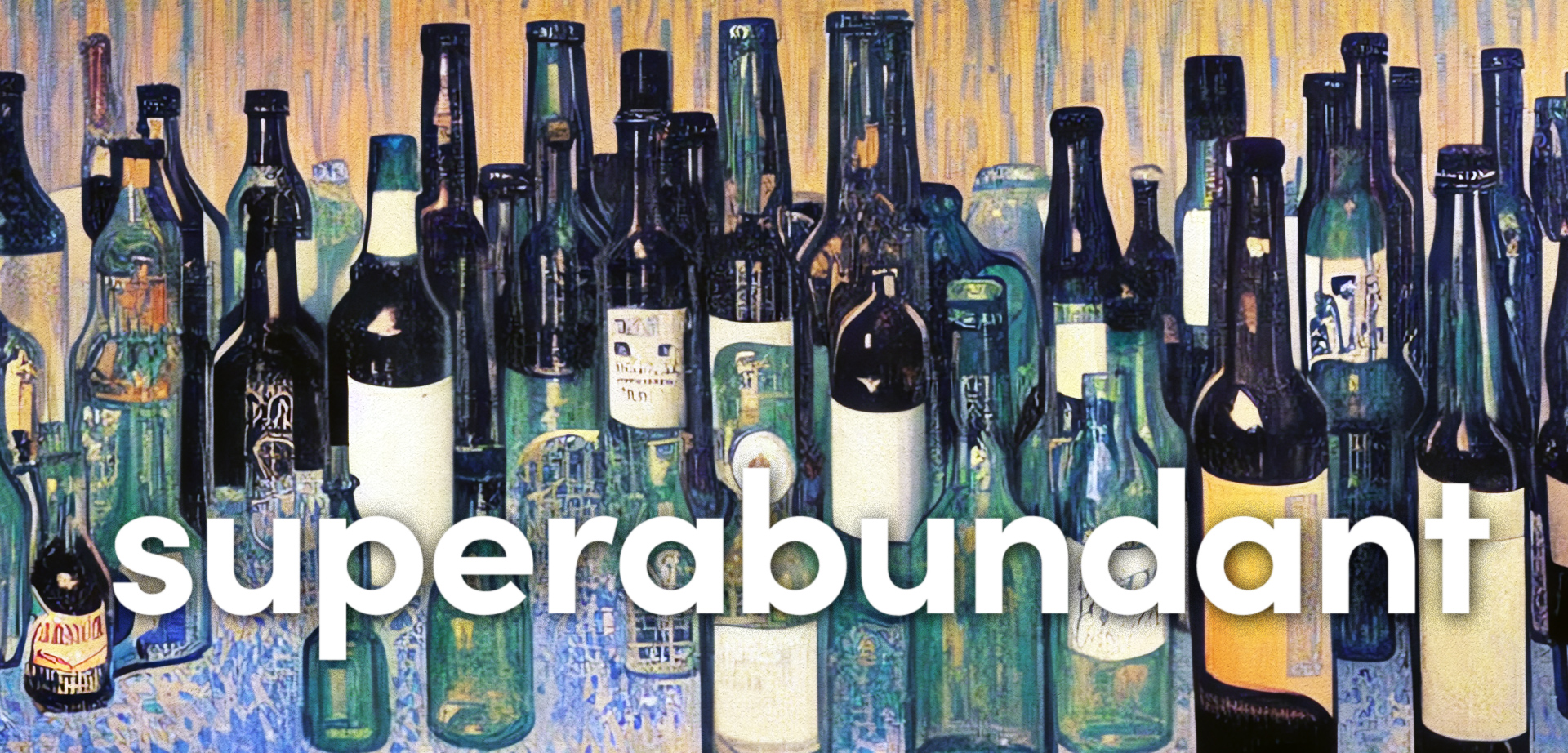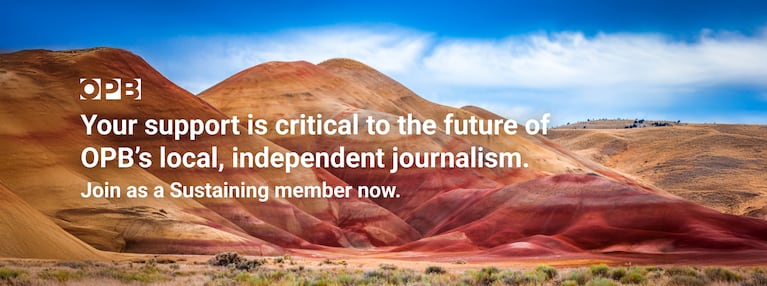Editor’s note: OPB’s video series “Superabundant” explores the stories behind the foods of the Pacific Northwest. Now we’re taking the same guiding principles to a new platform: Email. We’ve brought on food writer Heather Arndt Anderson, a Portland-based culinary historian and ecologist, to highlight different aspects of the region’s food ecosystem every week. This week she explores Oregon’s long history with temperance.
Click here to subscribe. For past issues, go here.

It’s a new year, and for many of us, that means crawling out from underneath the monthlong cookie-addled cheese bender known as “December.” Even if we don’t wholly subscribe to a complete lifestyle overhaul just because it’s January, as we settle into cleaner living and healthier habits, it makes sense to substitute getting buzzed with getting hydrated. Oregon’s history is fairly intertwined with alcohol, but do you know when the state’s first prohibition laws went on the books? Read on to find out!
Small bites: Why staying hydrated is good for us (or not), and magic mushrooms go street legal
Freshly picked morsels from the Pacific Northwest food universe:
Drink more water for a longer life.
A study published in the journal eBioMedicine on Jan. 2 suggests that staying hydrated can slow down the effects of aging, primarily by diluting sodium levels in the blood. In the study, higher serum sodium in middle age was linked to a faster aging and was correlated to higher rates of chronic illness.
…or don’t, it doesn’t actually matter?
The thing is, we don’t actually know what the optimal amount of hydration is. A different study published in Science in November showed that the commonly held convention of drinking eight glasses of water per day is pretty arbitrary. The study, which was authored by over 90 researchers, showed that — surprise — different people with different bodies need different amounts.
Mind-blowing news: Magic mushrooms are now officially legal.
Two years ago Oregon voters narrowly passed a law allowing adult use of psilocybin in controlled therapeutic settings, and on Jan. 1 that law went into effect. This is great news for those seeking alternative therapies for everything from depression to alcoholism; in a peer-reviewed study published in August, psilocybin-assisted psychotherapy showed an astonishing 83% reduction in heavy drinking in people suffering from alcohol use disorder.

Image generated by Stable Diffusion AI using prompt: "prohibition, temperance, Oregon, pacific northwest, douglas fir, oil painting, good composition, surrealistic, brush strokes, grainy, by Jan Toorop"
MacGregor Campbell, AI Illustration/MacGregor Campbell / OPB
A Dry History of Temperance in Oregon
It’s the new year, and for some, that means Dry January — the monthlong vacation we give our livers after the previous month’s revelry and holiday cheer. But even though plenty of us choose to abstain in Oregon (and restaurant mocktail menus are increasingly a testament to this fact, in addition to entire popups dedicated to nonalcoholic sips), booze is more or less ubiquitous here. Kids’ play areas are built into family-friendly brewpubs, and in 2021 an Oregon food scientist even developed a technique to distill liquor from whey, a dairy byproduct that’s often discarded. Oregon’s earliest wealth — and the city of Portland itself — was, in no small part, built on booze. In fact, our history with liquor goes back to before Oregon was even a state. (Portions of this story are adapted from Heather Arndt Anderson’s book Portland: A Food Biography.)
Blue ruining it for everyone
The year was 1842, and a British officer and ex-Hudson’s Bay Company employee named William Johnson got his hands on some Hudson’s Bay molasses, set up a little still on what is now the corner of Kelly Avenue and Curry Street in South Portland, and got busy moonshining. According to legislation written by the Oregon Provisional Government, the end product, known by the delightful name Blue Ruin, was of a flavor so inferior and an octane so potent that it:
...would bring withering ruin upon the prosperity and prospects of this interesting and rising community, by involving us in idle and dissolute habits, inviting hither swarms of the dissipated inhabitants of other countries, checking emigration, destroying the industry of the country, bringing upon us the swarms of savages now in our midst, interrupting the orderly and peaceable administration of justice, and in a word producing and perpetrating increasing and untold miseries that no mind can rightly estimate.

1852 map with Johnson’s still location added (City Portland archives with overlay by Heather Arndt Anderson)
Heather Arndt Anderson / OPB
With the threat of a new population of inebriates scaring white Christian families from the Oregon Territory, in 1844, 15 years before Oregon was even a state, the Oregon Territorial Government put the United States’ first prohibition laws on the books, effectively creating the precursor of the Oregon Liquor Control Commission (OLCC) in the process.
Fortunately for the Oregon Territory’s thirsty new arrivals (particularly those who’d struck gold in what is now Jackson County), the law was repealed five years later by the territorial Legislature and saloons popped up in earnest. By the time of the 1855 census, Portland still had only six saloons, but within a decade the number had jumped to 105 liquor retailers (plus a dozen wholesalers). With a population of a little over 6,000, that meant there was one liquor dealer for every 50 residents, including the children; by the 1870s, this number would be surpassed by saloons alone.
A few miles from Medford, Jacksonville soon became known as “Saloon City.” Other alcohol-related ordinances followed but considering that most of the state’s early leaders had a direct financial interest in booze, these types of rules were not enthusiastically embraced.
Booze gets the ax
At around the turn of the 20th century, while Carrie Nation was smashing up saloons with her hatchet in the American Breadbasket, a number of Temperance organizations began the arduous work of trying to dry up Oregon county by county, saloon by saloon. Beginning in 1904, they introduced a series of bills, resulting in several embattled years of the “wets” versus “dries” in various cities and counties across the state. A series of complicated rules and convoluted exceptions were volleyed back and forth; there were wet cities within dry counties and vice versa.

Abigail Scott Duniway seated at a table signing the precinct voter registration book. County Clerk John B. Coffey stands beside her. Duniway was the first female voter to register in Multnomah County, Ore. This photograph ran in the Oregonian on Feb. 15, 1913, with the caption, “Pioneer Suffragist who is first woman to register as voter in Multnomah County.”
Oregon Historical Society / OHS
Journalist and suffragist Abigail Duniway had already spent decades using her newspaper the New Northwest for both Temperance (though she was personally against prohibition) and women’s right to vote. The Temperance movement had been blamed for stalling women’s suffrage for decades since very often, the same women were on both campaigns. And to be fair, drunk men were more prone to violence against their spouses than sober ones, particularly at a time when it was still perfectly legal to beat one’s wife.
After failing five times to get the measure to the ballot, Duniway helped gain Oregon women the right to vote in 1912, eight years before the rest of the nation. As predicted, and to the chagrin of liquor dealers and general merrymakers across the state, women voters promptly utilized their new rights to enact Oregon’s prohibition law, five years before the Eighteenth Amendment was passed.

Image generated by Stable Diffusion AI using prompt: "prohibition, temperance, oil painting, good composition, surrealistic, brush strokes, grainy, by Jan Toorop"
MacGregor Campbell, AI Illustration/MacGregor Campbell / OPB
NA is A-OK
Nowadays, nonalcoholic beers are a dime a dozen — heck, even Budweiser has its own version now. Just as we have with the craft beverage industry on the whole, the Northwest has taken craft NA beverages by storm. Besides our dozen or so dedicated NA craft breweries (and some long-standing microbreweries that have added NA beers to their repertoire), we have one of Oregon’s most talented master distillers at the helm of zero-proof botanical spirits company Wilderton, based in Hood River. In Seattle, we have the country’s only sober-owned, woman-owned, nonalcoholic winery, JØYOUS bottling convincing rosé, cab sauv and sparkling wine.
Whether you go dry for the night, for the month, or for good, it’s never been easier to abstain from alcohol — and there’s never been a better place to do it.
Recipe: Mandelo-Rosemary Spritzer Mocktail

Don't call it a "Mandelo"-rian.
Heather Arndt Anderson / OPB
A mandelo is a cross between a mandarin and a pomelo, and has a flavor like a less-bitter, less-sour grapefruit. If you can’t find a mandelo (check better-stocked grocery stores and Asian markets, which tend to have cool fruits on lock), feel free to substitute pink grapefruit. You can also call the drink a Barry Mandelo if you want — you do you. Makes 2 drinks and a cup of rosemary syrup.
Ingredients
Rosemary simple syrup
- 1 cup water
- 1 cup sugar
- 5 fresh rosemary sprigs
Mocktail
- Juice from 1 mandelo (about 6 oz)
- Juice from 1 lime (about 1 oz)
- 2 oz rosemary syrup
- 1 12-oz can club soda or plain seltzer
- A few dashes of orange bitters
- 2 fresh rosemary sprigs for garnish
Instructions:
- Make the syrup: bring the water, sugar and rosemary to a boil, then turn off the burner and let the mixture steep for 30 minutes. Strain through a fine mesh sieve into a jar or bottle.
- Fill a cocktail shaker with ice, then pour in the mandelo and lime juices and the rosemary syrup. Shake thoroughly and strain into two spritzer glasses (or wide-bowled wine glasses) half-filled with crushed ice. Top with club soda, add a few dashes of bitters and plunk a sprig of rosemary into each glass.




